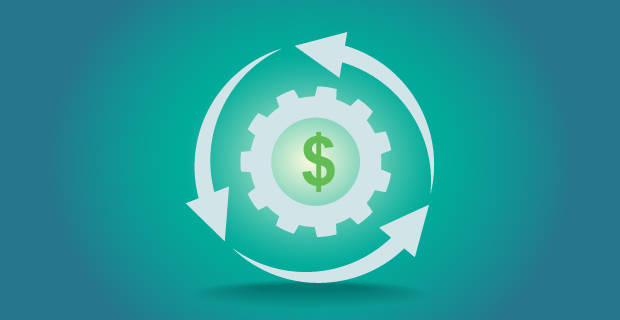What Is an Automatic Savings Plan (ASP)?
This is a cornerstone idea for those that have a deliberate and controllable trajectory in retirement. It’s as simple as, if I want to do “x” in retirement, I need to save “y” this year to get there, and then find ways to use payroll or income to make sure that target is hit.
At InSight we often preach:
Income – Savings = Expenses
As a way of achieving this goal. In this article, we discuss the methods for automating this way of thinking so that savings become technical long before it becomes habitual. An automated saving plan is simply a function of working with your CFP® regarding what your saving rate should be, and then using any of the tools available to make it part of the monthly flow of cash.

You will typically see savers set up an automatic transfer from a bank account or as part of their payroll into a savings or investment account every two weeks. This kind of forced discipline drives savers and investors to accrue assets throughout the business cycles and remove some of the saving and investment habits that can quickly upend an investment strategy.
Every time the individual receives a paycheck from their employer, the designated amount is automatically transferred into the individual’s savings account.
Article Key InSights:
- An Automatic Savings Plan puts the saver in the driver’s seat in an emotionless and academic way.
- This strategy is convenient for someone who wants to see the account grow steadily over time.
- It makes savings an early and paramount part of the budgeting process instead of an afterthought.
- It makes savings a habit over time but can help develop the discipline for those not born or raised with the skillset.
The benefits of an Automatic Savings Plan (ASP)
A savings plan that uses the technology and tools to put saving first, has other benefits as well. If the formula becomes Income – Savings = Expenses, those on a plan for retirement find themselves less likely to miss critical months when things get tight.
Supports the need to budget
They also find that setting their budget after savings makes it easier to keep to it. Thinking about their savings as a non-discretionary expense is a great way to go. It’s a necessity, not a hope.
They also find that if the money is saved and invested, they are less likely to backslide into spending that money. It puts that money in a mental place that is more productive and out of reach for day-to-day demands. This means that some of the small, “nickel and dime” spending that often limits people’s savings is no longer a concern.
The psychology of “money in the bank” is interesting. An entire school of economics is dedicated to it. Known as the Wealth Effect – having a surplus of money in your account causes you to discount its value. This creates a change in behavior pre-cognitively. Here is an example, if a jet ski (my go-to for something fun and likely a poor financial purchase) costs $9,000 and I have $10,000 in my savings account this purchase is 90% of my cash on hand. I will think more seriously about spending that money. If I look at the same jet ski and I have $100,000 in cash it’s only 9% then I might change my mind about the cost of the jet ski. But at no point did the value of the jet ski change, only my opinion of its cost was altered.
In many cases, we make these changes in an item’s valuation before the cognitive brain kicks in. Hence, impulse buying. The grocery store knows this, and if your groceries are EVER short of your budget they have several “impulse” items available to shore up the cost of that purchase.
We think adding an automated savings strategy helps to make sure that the person feeling the negative impact of this impulse is not “retired” you.
My favorite part of saving first and then spending is I don’t have to worry about what I spend because I have already saved in all the places I need. This enables me to not care as much about spending on a day-to-day basis and relieves a lot of stress about money.
Managing decisions toward delayed gratification
If I ask people, who would they sign up for $1 million paid today, or $4 million paid in 10 years, far too many would take the $1 million today. It’s understandable, there is pain and debt today you can alleviate, and our brains are not engineered to think logically first, it thinks reactively.
It’s only after the rational brain has a chance to understand the real value of $4 million in a future state that we get comfortable with the idea of waiting for it. The logical part of the brain can be shown the effects of compounding returns that the impulsive brain discounts greatly, and as a result, poor financial decisions are made.
 Managing this “delayed gratification” can be done by having a goal in mind, setting up an automatic way to achieve that goal, and limiting the capacity for the impulse to upset that goal. All of these can be mitigated by using an Automatic Savings Plan.
Managing this “delayed gratification” can be done by having a goal in mind, setting up an automatic way to achieve that goal, and limiting the capacity for the impulse to upset that goal. All of these can be mitigated by using an Automatic Savings Plan.
Saving through losses
An automatic savings plan can also help investors continue to contribute savings to their investment portfolio through losses. Investing for many is highly emotional. Investors become emotionally tied to their own decisions, and they feel the pain of a loss, disproportionately, to the gains of a win. This makes investing hard for most. However, those that develop a portfolio with a long-term expectation, and manage their ability to routinely and programmatically add to it gain several long-term benefits. First, they are able to buy when things are darkest when the headlines are poor, and fear grips lesser prepared investors. Secondly, it helps them manage their buying when things are good. While saving, they limit the number of units they buy when markets are expensive.

Savers, who invest programmatically are less likely to associate a bad investment with a personal decision they made. They are more likely to realize this is “bad timing” rather than a “bad decision” and more likely to keep investing through the trough.
An investor who sees an opportunity in a market sell-off early, and uses their cash to add, only to see the markets drop further from that buy. This person is less likely to trust themselves when the opportunity is available to add more, and there is a greater chance they have spent their available cash too early.
Investing programmatically removes this mental drift towards self-doubt, and puts the decision back in the rational camp.



